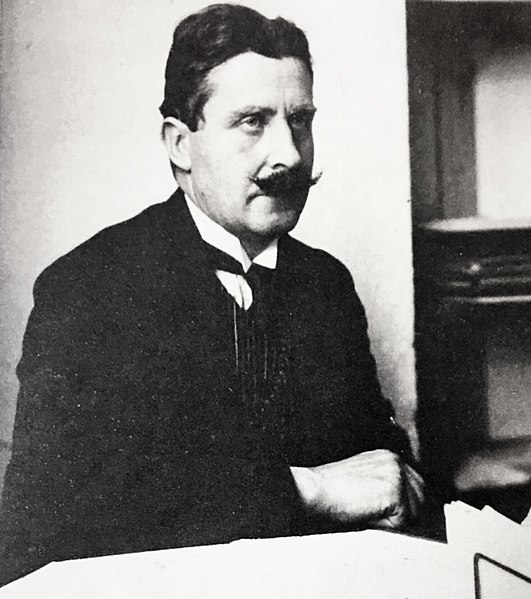Bahaeddin Shakir or Bahaddin Şakir was a physician, Turkish nationalist politician, and one of the architects of the Armenian genocide. Though he was not a minister or deputy in the government, he held powerful sway in the Central Committee of the Committee of Union and Progress and was the director of the Şûrâ-yı Ümmet, a magazine that supported the party. He was one of the three important names of the "Doctors Group" in the CUP ; He was a part of the pan-Turkist/Turanist wing of Union and Progress.
Bahaeddin Şakir
Portrait from the October 1909 issue of Servet-i Fünun
Portrait
Graves honoring Armenian Genocide perpetrators Şakir and Cemal Azmi in the cemetery of Şehitlik Mosque in Berlin (foreground left).
Committee of Union and Progress
The Committee of Union and Progress, refers to several revolutionary groups and a political party active between 1889 and 1926 in the Ottoman Empire and the Republic of Turkey. The foremost faction of the Young Turks, the CUP instigated the 1908 Young Turk Revolution, which ended absolute monarchy and began the Second Constitutional Era. After an ideological transformation, from 1913 to 1918, the CUP ruled the empire as a dictatorship and committed genocides against the Armenian, Greek, and Assyrian peoples as part of a broader policy of ethnic erasure during the late Ottoman period. The CUP and its members have often been referred to as Young Turks, although the movement produced other political parties as well. Within the Ottoman Empire its members were known as İttihadcılar ('Unionists') or Komiteciler ('Committeemen').
Committee of Union and Progress
Members of the Young Turks: İshak Sükuti, Serâceddin Bey, Tunalı Hilmi, Âkil Muhtar, Mithat Şükrü, Emin Bey, Lutfi Bey, Doctor Şefik, Nûri Ahmed, Doctor Reshid and Celal Münif
Ahmed Rıza, prominent early member of the CUP
Members of the Central Committee of the CUP proclaiming the Second Constitutional Era. Hafız Hakkı, Hafız İbrahim Hakkı, Talât, Enver, Rıza, Hüseyin Kazım (Kadri), Unknown, Midhat Şükrü (Bleda), Hayri.








